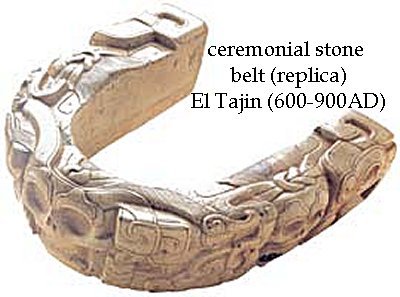Millennia Old Ceremonial Stone Belt And Maya Pok-A-Tok Ball Game
A. Sutherland - AncientPages.com - This fascinating artifact, which is displayed in the Mexican gallery of the British Museum, resembles a giant stone horseshoe.
It weighs almost 40 kilos (90 lbs; it is approximately 40 centimeters (15 inches) long and about 12 centimeters (4 inches) thick, and is made of a very beautiful green-grey speckled stone.
It is a ceremonial stone belt, as old as Pok-A-Tok, a ball game that ancient Maya most probably inherited from the Olmecs. Pok-A-Tok was played since at least 1,400 BC by the pre-Columbian peoples of ancient Mesoamerica. Known among the Aztecs as “tlachtli”, Pok-A-Tok was an important part of their political and religious festivals.
Its purpose has long remained a puzzle. It was not a typical yoke for draught animals or carthorses (as it was initially thought) because there were no such horses or other draught animals in Central America until the Spaniards brought them from Europe in the sixteenth century.
According to Michael Whittington, an expert on these ancient ball games, these heavy, yoke-like stone belts were probably worn as part of the ritual ceremonies at the beginning of the game and for a very brief time. Worn during the games, they would significantly slow down a player’s competition capabilities such as maneuverability.
Ceremonial stone belts are representations of represent the padded belts made of leather, padded cloth or other textiles and worn by players to protect their hips. Other protection made of jaguar skin or deer) was for the head, knees, hips and elbows.
When the Spaniards arrived they were amazed by the ball that the game was played with, because it was made of rubber, a substance unknown to Europeans.
The very first view of a bouncing ball, a round object seemingly defying gravity and shooting around in random directions, must have been extremely perplexing.
A relief of the Crown showing a scene from the Mesoamerican Ball Game. Image credit: Adrian Hernandez - CC BY-SA 4.0
“They call the material of this ball hule [rubber] … jumping and bouncing are its qualities, upward and downward, to and fro. It can exhaust the pursuer running after it before he can catch up with it…” wrote the Spanish after he observed the game.
Pre-Columbian ball courts have been found in the center of almost every Maya city, throughout Mesoamerica, as for example at Copán, as far south as modern Nicaragua, and possibly as far north as what is now the U.S. state of Arizona.
In some modern form and with slightly varying rules, the ball game tradition has survived through time until today in many places throughout Mesoamerica. One rule, however, has remained unchanged: the game was played on an I-shaped court, with rings set 20 to 30 feet off the ground.
One of the Ball Courts of the Mayan ruins in Coba, Mexico. Image credit: Wikipedia
Ball games were spectacular and dangerous in ancient Central America. In Pok-A-Tok, captives were forced to play the game for their lives. It was not easy to stay alive in this game. The aim was to keep the ball in the air and finally to land it in the opponents’ end of the court.
The losers became sacrificial victims and faced torture and execution immediately following the competition.
Even if played as a sport and for fun, there was always a team of losers and at least, their captain was traditionally sacrificed to the gods.
To the game, it used an 8- inch (or more) ball of solid baked rubber (at least eight times a soccer ball). It was heavy and it could weigh from 3 or 4 kilos (8 lbs) to almost 15 kilos (30 lbs).
The number of players ("Pitzhil") varied between 2 and 5 in each team.
The players had only one desire: to get the ball through a narrow, stone ring placed on the court wall, often as high up as 20 feet from the ground (or onto a marker).
They used only shoulders, heads, elbows, wrists, and hips but never – hands.
Symbolic Meaning
For the Maya, the ball represented the Sun, the Moon, or planets and the court was the cosmos.
Pok-A-Tok was considered the sacred game of the gods played on Earth and was not just a competitive sport.
It held a special place in the belief system of the ancient Central Americans and symbolized a mythical struggle of life, death, war, and sacrifice. The ball game was a ceremony dedicated to the memory of the ancestors and linked to agriculture and calendar cycles.
The ball courts were considered entrances to the underworld. The biggest ball court of all in Mesoamerica - 545 feet long and 225 feet wide – is located among the ruins of Chichén Itzá in Mexico's Yucatán peninsula.
For the Aztec, for example, the game symbolized reenactment of the daily trial of the Sun rising after being born again from nighttime of fighting the underworld.
Written by – A. Sutherland AncientPages.com Staff Writer
Copyright © AncientPages.com All rights reserved. This material may not be published, broadcast, rewritten or redistributed in whole or part without the express written permission of AncientPages.com
Expand for referencesReferences:
Scarborough Vernon L. The Mesoamerican Ballgame
Gillings T. Last Game For The Gods
More From Ancient Pages
-
 Amazing Ancient Roman Marble Floor Found In The Underwater City Of Baiae, Italy
Archaeology | Aug 5, 2024
Amazing Ancient Roman Marble Floor Found In The Underwater City Of Baiae, Italy
Archaeology | Aug 5, 2024 -
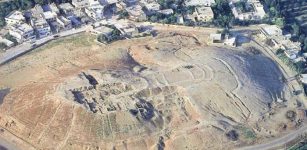 Iron Age Site Tell Deir ‘Alla (“Mound Of The High Monastery”) Flourished 400 Years In Central Jordan Valley
Archaeology | Jul 25, 2022
Iron Age Site Tell Deir ‘Alla (“Mound Of The High Monastery”) Flourished 400 Years In Central Jordan Valley
Archaeology | Jul 25, 2022 -
 Unique Archaeological Finds Point To The Lost Indigenous Town Of Sarabay In Florida
Archaeology | Jun 20, 2022
Unique Archaeological Finds Point To The Lost Indigenous Town Of Sarabay In Florida
Archaeology | Jun 20, 2022 -
 Is This The Face of Queen Elizabeth I?
Archaeology | Oct 15, 2018
Is This The Face of Queen Elizabeth I?
Archaeology | Oct 15, 2018 -
 Strange Engraving Made By Knights Templar In French Village – Riddle Of The Rod – Part 1
Ancient Mysteries | Oct 7, 2019
Strange Engraving Made By Knights Templar In French Village – Riddle Of The Rod – Part 1
Ancient Mysteries | Oct 7, 2019 -
 Ancient Mystery From The Age Of Taurus And The Murdered Astronomer – Overlooked Secret In The North – Part 1
Ancient Mysteries | Oct 30, 2019
Ancient Mystery From The Age Of Taurus And The Murdered Astronomer – Overlooked Secret In The North – Part 1
Ancient Mysteries | Oct 30, 2019 -
 Largest Ever Human Family Tree: 27 Million Ancestors Mapped
Archaeology | Feb 25, 2022
Largest Ever Human Family Tree: 27 Million Ancestors Mapped
Archaeology | Feb 25, 2022 -
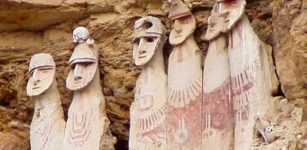 Mysterious Sarcophagi Belonging To The Chachapoyas The Cloud Warriors
Archaeology | Mar 4, 2014
Mysterious Sarcophagi Belonging To The Chachapoyas The Cloud Warriors
Archaeology | Mar 4, 2014 -
 Bees Originated From An Ancient Supercontinent Millions Of Years Earlier Than Previously Thought
Evolution | Jul 31, 2023
Bees Originated From An Ancient Supercontinent Millions Of Years Earlier Than Previously Thought
Evolution | Jul 31, 2023 -
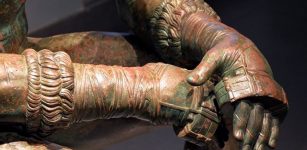 Boxer At Rest – Rare Sculpture And Masterpiece Of Hellenistic Bronze Art
Artifacts | May 21, 2021
Boxer At Rest – Rare Sculpture And Masterpiece Of Hellenistic Bronze Art
Artifacts | May 21, 2021 -
 Secretly Engraved Woman Name Discovered In Medieval Manuscript – Who Was Eadburg?
Archaeology | Dec 3, 2022
Secretly Engraved Woman Name Discovered In Medieval Manuscript – Who Was Eadburg?
Archaeology | Dec 3, 2022 -
 Expressive Beautiful And Celebrated Bowls Created By Mimbres Artisans From Distant Past
Artifacts | Oct 9, 2023
Expressive Beautiful And Celebrated Bowls Created By Mimbres Artisans From Distant Past
Artifacts | Oct 9, 2023 -
 Powerful Thunderbird Sent By The Gods To Protect Humans From Evil In Native American Legends
Native American Mythology | Mar 26, 2017
Powerful Thunderbird Sent By The Gods To Protect Humans From Evil In Native American Legends
Native American Mythology | Mar 26, 2017 -
 10,000-Year-Old Seeds Offer First Evidence Of Farming In A Green Sahara
Archaeology | Mar 19, 2018
10,000-Year-Old Seeds Offer First Evidence Of Farming In A Green Sahara
Archaeology | Mar 19, 2018 -
 On This Day In History: Johannes Kepler ‘Father Of Modern Astronomy’ Was Born – On Dec 27, 1571
News | Dec 27, 2016
On This Day In History: Johannes Kepler ‘Father Of Modern Astronomy’ Was Born – On Dec 27, 1571
News | Dec 27, 2016 -
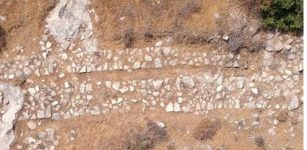 3,000-Year-Old Settlement Studied By Archaeologists In Cyprus
Archaeology | Sep 10, 2022
3,000-Year-Old Settlement Studied By Archaeologists In Cyprus
Archaeology | Sep 10, 2022 -
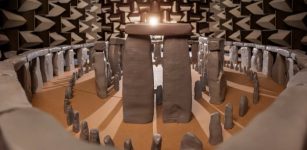 Ancient Sound Of Stones – Acoustics At Stonehenge Tested By Scientists
Ancient Technology | Aug 29, 2020
Ancient Sound Of Stones – Acoustics At Stonehenge Tested By Scientists
Ancient Technology | Aug 29, 2020 -
 2,500-Year-Old Phoenician Shipwreck Being Rescued By Archaeologists
Archaeology | Jul 4, 2023
2,500-Year-Old Phoenician Shipwreck Being Rescued By Archaeologists
Archaeology | Jul 4, 2023 -
 Yggdrasil: Eternal And Sacred Tree Of Life In Norse Mythology
Featured Stories | Sep 22, 2016
Yggdrasil: Eternal And Sacred Tree Of Life In Norse Mythology
Featured Stories | Sep 22, 2016 -
 Rare Hidden Copy Of Shakespeare Sonnet 116 Discovered In A 17th-Century Poetry Collection
Linguistic Discoveries | Mar 24, 2025
Rare Hidden Copy Of Shakespeare Sonnet 116 Discovered In A 17th-Century Poetry Collection
Linguistic Discoveries | Mar 24, 2025


